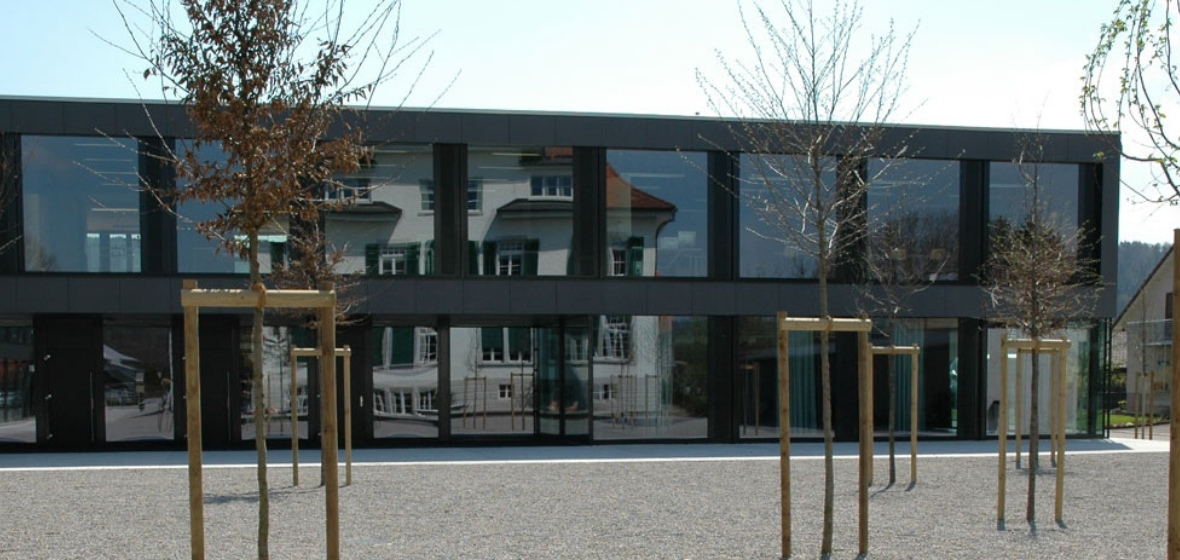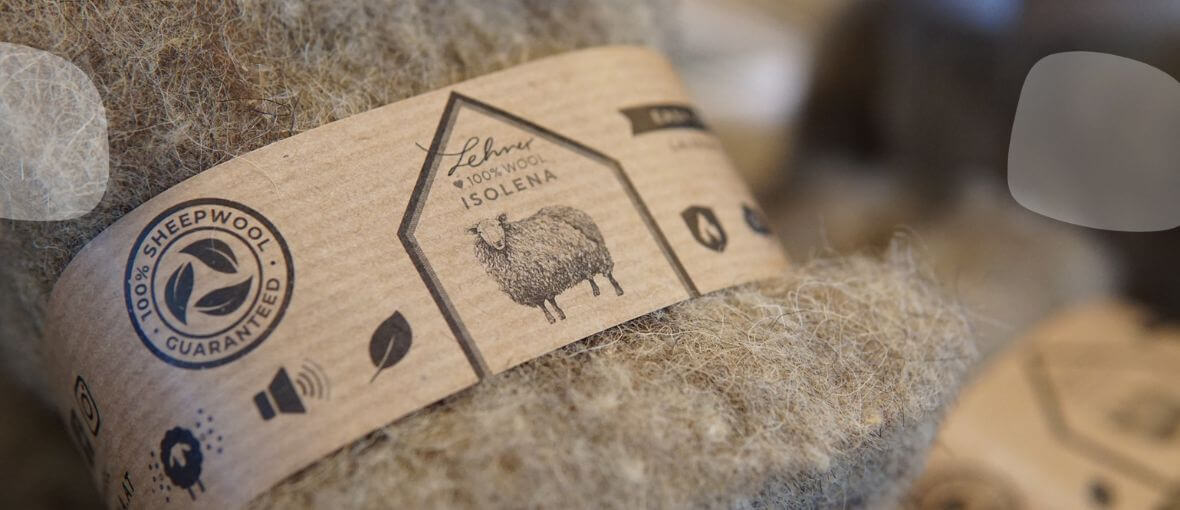Breathe easy thanks to sheep's wool


New building saved: healthy breathing thanks to sheep's wool
Lightweight timber construction, wood pellet heating and an 11 kW photovoltaic system - sustainability played a decisive role in the new construction of the Oberstufenzentrum Ost in Felben-Wellhausen. After the school holidays, health symptoms appeared in the children and teachers and led to a nasty discovery: far too high formaldehyde levels in the interior rooms! By using sheep's wool, it was possible to avoid costly and time-consuming dismantling or demolition.
The new building was officially opened in summer 2004 and the pupils and teachers were able to move into their new classes. However, by the autumn, the first pupils were already complaining about poor indoor air quality, eye and respiratory tract irritation and headaches. In 2005, the first measurements were taken to get to the bottom of the problem.
"Initially, we didn't know exactly where the problem was and what was causing the children and teachers' complaints. We therefore carried out various measurements and came up with the result relatively quickly: formaldehyde. The concentration was too high due to the large number of wooden materials used in the load-bearing structure and also as panelling," explains Stefan Schrader, graduate environmental scientist (ETH).
The renovation work and the reduction of the high formaldehyde concentration was carried out in stages: 3-layer panels on the walls and the perforated 3-layer panels on the ceiling, which emitted the most formaldehyde, were removed. It was more difficult with the load-bearing elements. The wooden ceiling, a hollow box construction, was also clad with a 3-layer board containing formaldehyde. The gypsum fibreboards installed in the partition walls absorbed the formaldehyde and released it back into the room air.
"Here, too, we wanted to find a sustainable and durable way to reduce the concentration. The load-bearing elements were therefore covered with a special 1 mm thin sheep's wool fleece. Sheep's wool has the ability to accumulate formaldehyde and other aldehydes and chemically bind them irreversibly - at our concentrations for over 20 years," says Stefan Schrader.
The use of sheep's wool was a lifeline in times of need, particularly in the load-bearing timber construction, as replacing the load-bearing structure is tantamount to demolishing the building or building a new one. Thanks to the sheep's wool, the formaldehyde concentration fell relatively quickly back to normal levels. The renovation work on the school building was completed in summer 2006 after 9 months of refurbishment and the pupils were able to move back into their classes.
Building owner / client
Schools Frauenfeld Felben-Wellhausen
Reorganisation consulting
Bau- und Umweltchemie AG
Formaldehyde remediation
2006
Downloads / Sources
- Report "Sheep at school" (© www.mikado-online.de)
- Factsheet: Neutralisation of formaldehyde through sheep's wool - Stefan Schrader
- Newspaper article "Poison from the school"
Picture credits:
© Picture 2: Reto Martin/Thurgauer Zeitung
More on the topic
On average, we spend around 20 hours a day indoors. The indoor air should be in order. However, pollutants are often hidden in unexpected places. There are many reasons for this: wrong choice of building materials, drying times not adhered to, airtightness, appearance before health ... One of the pollutants that can make you ill if the concentration is too high is formaldehyde.
Headaches, burning eyes, irritated airways - all of these can have something to do with indoor air quality. Factors such as humidity, temperature and regular ventilation are responsible for its quality. What can you look out for before, during and after construction to ensure good indoor air quality?
Sheep's wool is the only naturally occurring insulating material that both keeps you warm and protects you from heat, cold and moisture. The uniqueness of the raw fibre sheep's wool also makes it a material with unique, natural advantages in its end product. At ISOLENA, our commitment, research and development provide even more benefits.




